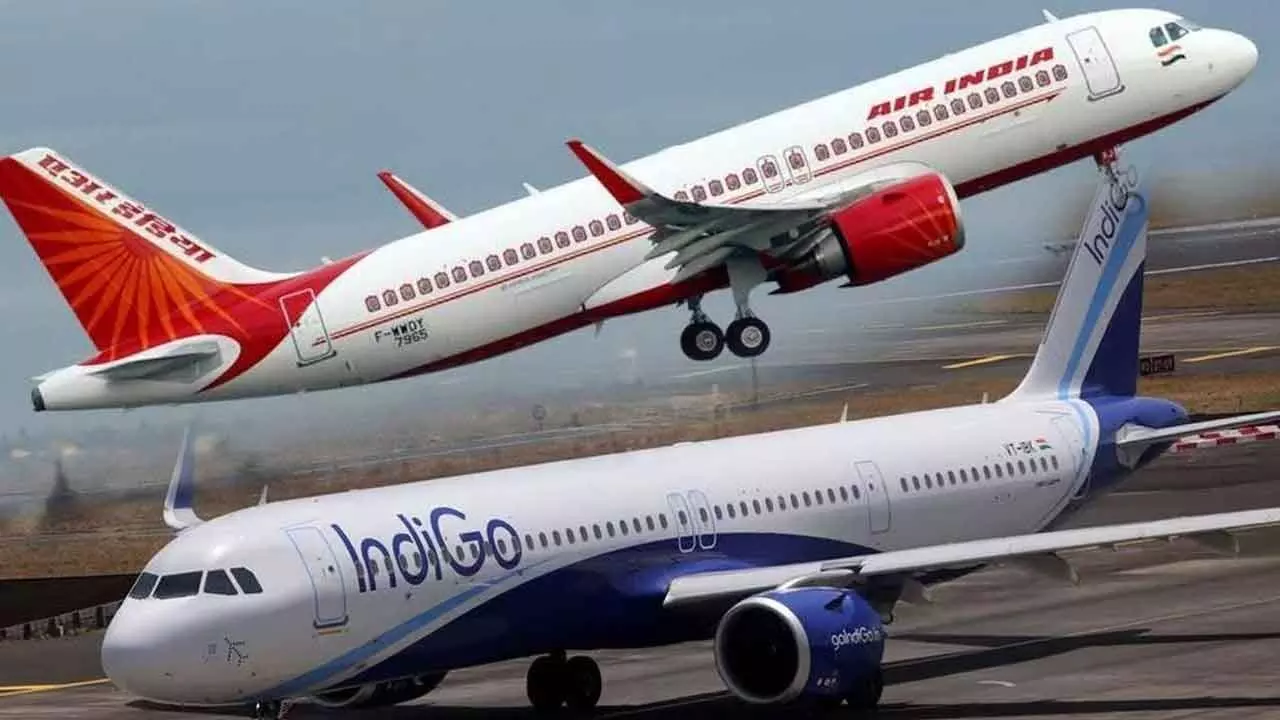Flight tickets turn costlier as Indian airports increase UDF
In the United States, passengers pay $4.50 'passenger facility charge' for each flight segment
Flight tickets turn costlier as Indian airports increase UDF

Flights may become more expensive for smaller cities, which might impact the region's connectivity. Moreover, businesses may increasingly prefer virtual meetings over in-person ones, impacting local economies reliant on business visitors
Many major Indian airports have increased their user development fees (UDF) in the last few months resulting in higher priced flight tickets. Since the beginning of FY25, 16 major Indian airports have quietly hiked their UDF. Airports claim that they require this funding to cover costs and improve infrastructure.
Passengers boarding a domestic trip from Patna airport now pay Rs 660 as UDF, up 223 per cent from FY24. Similarly, at Kannur airport, the UDF is Rs 750 (up 135 per cent), at Jaipur it is Rs 805 (up 104 per cent). At Ahmedabad, Thiruvananthapuram and Chennai airports, departing travelers pay 80 per cent, 52 per cent and 34 per cent more in UDF (Rs 450, Rs 250, and Rs 770, respectively). Even metro airports like Bengaluru and Hyderabad haven't been shy, with increases ranging from seven per cent to 22 per cent during the same period.
The UDF isn't alone, though. It is part of a family of charges that includes passenger service fees (which cover security costs), development fees (including funds for specific development projects), aviation security fees (another security-related charge), CUTE fees (Common User Terminal Equipment fees), and more.
Interestingly, such fees aren't unique to India. To cite an example, in the United States, passengers pay a 'Passenger Facility Charge', which is capped at $4.50 for each flight segment, with a maximum of two PFCs for a one-way journey or four PFCs for a round trip, adding up to $18. These fees are used to fund projects that improve safety, security, capacity, noise reduction and airline competitiveness.
Over the last six quarters, domestic airfares in India have increased by 40 per cent on key routes. It is no secret that Indian airlines are dealing with supply chain problems and engine failures. To support the rising demand, they have ordered about 1,700 planes, more than twice its current fleet. ICRA expects deliveries to slow over the next decade due to these supply chain issues and aircraft manufacturers.
Now combine this with India’s booming aviation market, with an average of 4.71 lakh daily domestic passengers, up 14 per cent from the pre-Covid count of 3.98 lakh passengers.
With IndiGo and Air India dominating 90 per cent of domestic travel, competition has thinned out. Airfares on certain internal routes in India have climbed up to three times in the previous year due to a lack of competition, with just one or two airlines flying on certain routes with a limited number of flights.
For example, between April and November 2023, costs for nonstop flights between Srinagar and Leh increased by more than 229 per cent, compared to a national average increase of 21 per cent. Similarly, IndiGo is the only airline that provides nonstop flights from Jaipur to Goa, resulting in a 135 per cent spike in prices from April to November.
Other routes, including Srinagar-Chandigarh and Dehradun-Mumbai, have experienced fare rises of 113 per cent and 57 per cent, respectively.
Rise in UDF, along with the rising demand, lack of competition, and supply deficiencies, have resulted in a surge of airfares.
The consequences of soaring airfares are far-reaching. Flights may become more expensive for smaller cities, which might impact the region's connectivity. Moreover, businesses may increasingly prefer virtual meetings over in-person ones, impacting local economies reliant on business visitors. Airlines may also decide to eliminate less lucrative routes, possibly isolating certain regions and deepening the urban-rural gap.
Indian airlines were able to break-even in the early 2000s, despite their less efficient operations due to higher real-term fares. Given India's price-sensitive market, this technique has not proven effective.
Fast forward to now, and India still has some of the world's most cheap air travel options.
According to aviation analytics firm Cirium, India had the lowest average domestic airfare among significant markets by 2023. For a distance of 622 miles, the one-way average economy class fare was just $80. Compare this to $167 for 768 miles in Australia, $180 for 1,108 miles in the US or $106 for 813 miles in Europe.
The challenge is to maintain this balance between affordability and the industry's financial health as the sector evolves.
A Tariff Monitoring Unit (TMU) was set up by the Directorate General of Civil Aviation (DGCA) to keep an eye on airfares on major domestic routes. The TMU checks the websites of planes once a month to make sure that the prices that are charged are within the stated range.
At the same time, airlines like Air India and IndiGo have ordered about 1,000 planes, which could help with the shortage of space in the years to come.

